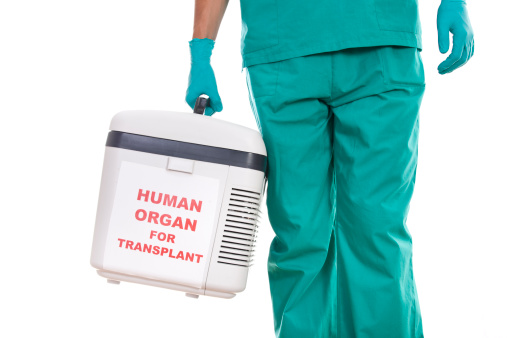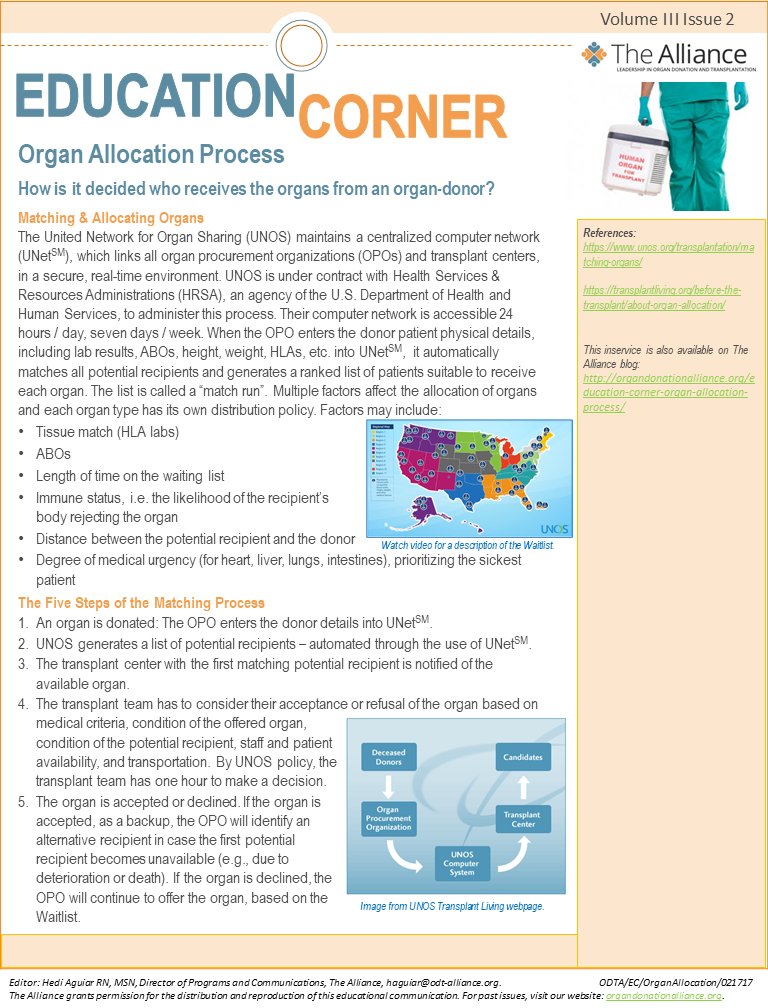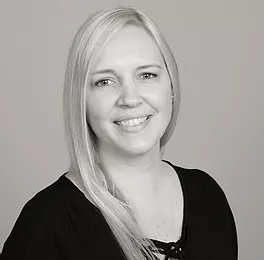Matching & Allocating Organs
The United Network for Organ Sharing (UNOS) maintains a centralized computer network (UNetSM), which links all organ procurement organizations (OPOs) and transplant centers, in a secure, real-time environment. UNOS is under contract with Health Services & Resources Administrations (HRSA), an agency of the U.S. Department of Health and Human Services, to administer this process. Their computer network is accessible 24 hours / day, seven days / week. When the OPO enters the donor patient physical details, including lab results, ABOs, height, weight, HLAs, etc. into UNetSM, it automatically matches all potential recipients and generates a ranked list of patients suitable to receive each organ. The list is called a “match run”. Multiple factors affect the allocation of organs and each organ type has its own distribution policy. Factors may include: 
- Tissue match (HLA labs)
- ABOs
- Length of time on the waiting list
- Immune status, i.e. the likelihood of the recipient’s body rejecting the organ
- Distance between the potential recipient and the donor
- Degree of medical urgency (for heart, liver, lungs, intestines), prioritizing the sickest patient
The Five Steps of the Matching Process
- An organ is donated: The OPO enters the donor details into UNetSM.

- UNOS generates a list of potential recipients – automated through the use of UNetSM.
- The transplant center with the first matching potential recipient is notified of the available organ.
- The transplant team has to consider their acceptance or refusal of the organ based on medical criteria, condition of the offered organ, condition of the potential recipient, staff and patient availability, and transportation. By UNOS policy, the transplant team has one hour to make a decision.
- The organ is accepted or declined. If the organ is accepted, as a backup, the OPO will identify an alternative recipient in case the first potential recipient becomes unavailable (e.g., due to deterioration or death). If the organ is declined, the OPO will continue to offer the organ, based on the Waitlist.






